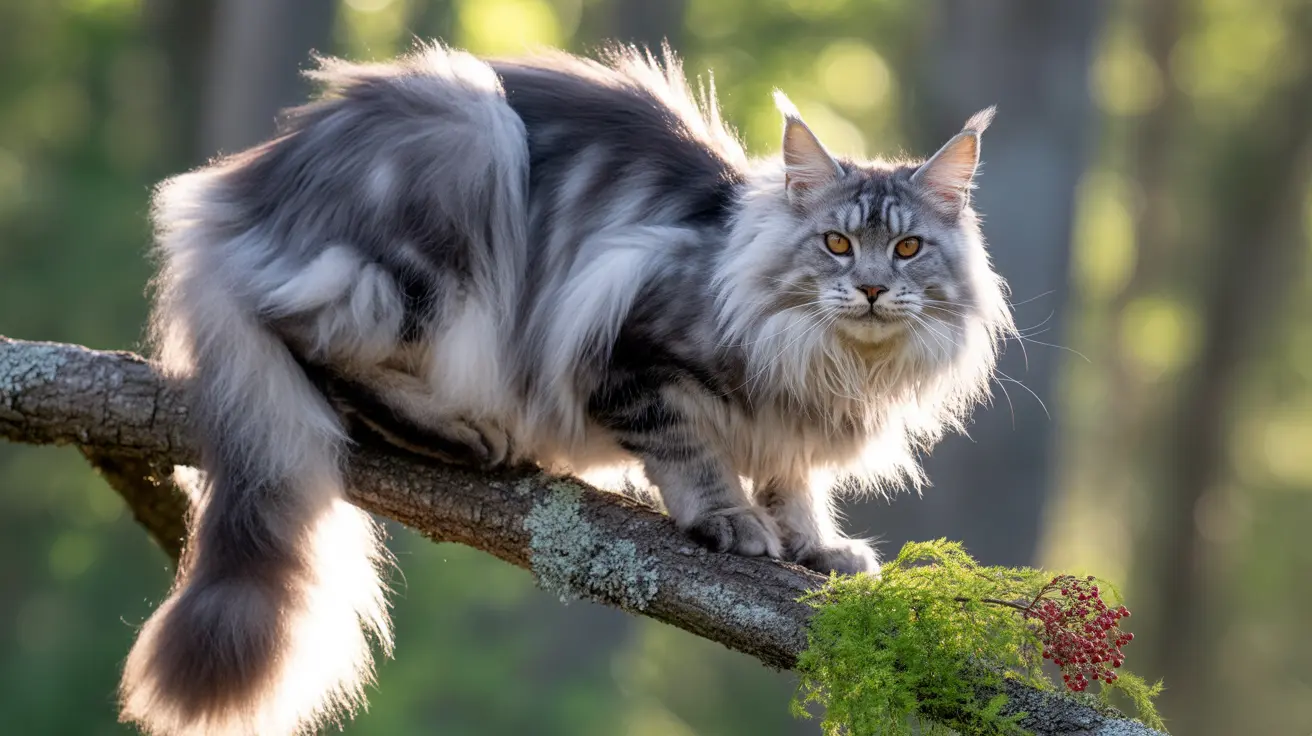Introduction
Long tail cat breeds have captivated cat lovers worldwide, with the Maine Coon standing as the undisputed champion of impressive tail lengths. These remarkable felines not only showcase stunning physical attributes but also demonstrate how their lengthy tails serve important functions in their daily lives. From record-breaking measurements to practical applications, the world of long-tailed cats offers fascinating insights into feline evolution and adaptation.
Whether you're considering adopting a long-tailed cat or simply curious about these magnificent creatures, understanding their unique characteristics and care requirements is essential. Let's explore the most notable long tail cat breeds and discover what makes them so special.
Maine Coon: The King of Long Tails
Maine Coons reign supreme in the world of long tail cat breeds, consistently breaking world records for tail length. The current record holder, Mr. Pugsley Addams, sports an impressive tail measuring 46.99 cm (18.5 inches). These gentle giants take several years to reach their full size, with their tails continuing to grow and develop until they're 4-5 years old.
Their magnificent tails serve multiple purposes beyond aesthetic appeal. In their native cold climate, Maine Coons use their bushy tails as natural scarves, wrapping them around their bodies for added warmth. The tail also aids in balance during climbing and hunting activities, showcasing the practical benefits of this striking feature.
Notable Long Tail Cat Breeds
Norwegian Forest Cat
The Norwegian Forest Cat possesses a long, luxurious tail that matches its robust body size. Like their Maine Coon cousins, these cats developed their impressive tails to survive in cold Scandinavian climates. Their tails are typically as long as their bodies and feature thick, water-resistant fur.
Turkish Angora
Known for their elegant appearance, Turkish Angoras sport long, plume-like tails that complement their graceful movements. Their tails can be as long as their bodies and are often carried high, adding to their regal bearing.
Siberian Cat
Siberian cats feature thick, bushy tails that serve as natural insulators in cold weather. Their tails are typically medium to long in length and are covered in dense, water-resistant fur that helps protect them in harsh conditions.
Care and Maintenance of Long-Tailed Cats
Caring for cats with exceptionally long tails requires special attention to grooming and environmental considerations. Regular brushing is essential to prevent matting and maintain the tail's natural beauty. Owners should also be mindful of their cat's tail when closing doors or moving furniture to prevent accidents.
Creating a cat-friendly environment that accommodates long tails is crucial. This includes providing adequate space for movement and ensuring climbing structures are stable enough to support these larger cats during their acrobatic activities.
Health and Genetics
The impressive tail length in certain breeds, particularly Maine Coons, is largely determined by genetics. This trait often runs in family lines, as demonstrated by multiple record-holders coming from the same lineage. While genetics play the primary role, proper nutrition and healthcare contribute to optimal development.
Frequently Asked Questions
What makes Maine Coons the most famous long tail cat breed and how long can their tails grow?
Maine Coons are famous for their tail length due to their genetic predisposition for exceptional growth. Their tails can grow up to 18.5 inches or more, as demonstrated by current record holder Mr. Pugsley Addams. Their tails typically reach full length by age 4-5 years.
How do Maine Coon cats use their long, bushy tails in everyday life and for their wellbeing?
Maine Coons use their tails for balance during climbing and hunting, communication with other cats and humans, and as natural blankets for warmth. The tail serves as a crucial tool for expressing emotions and maintaining body temperature in cold weather.
Are exceptionally long tails in Maine Coons hereditary, and can diet influence tail growth?
Long tails in Maine Coons are primarily hereditary, often running in specific family lines. While proper nutrition supports overall health and development, genetics remain the main factor in determining tail length.
What grooming and care tips should owners of long tail cat breeds, especially Maine Coons, follow?
Regular brushing, careful monitoring for matting or tangles, and creating a safe environment to prevent tail injuries are essential. Daily grooming helps maintain fur health and prevents painful knots from forming.
Which other cat breeds besides Maine Coons are known for having long or bushy tails?
Norwegian Forest Cats, Turkish Angoras, Siberian Cats, and Balinese cats are known for their long, impressive tails. Each breed has unique characteristics in tail length, fur texture, and appearance.
Conclusion
Long tail cat breeds, particularly Maine Coons, represent some of the most impressive examples of feline evolution and adaptation. Their stunning tails serve both practical and aesthetic purposes, making them truly remarkable creatures. Whether you're considering adopting one of these magnificent cats or simply admiring their beauty, understanding their unique characteristics and care requirements helps appreciate these extraordinary felines even more.






